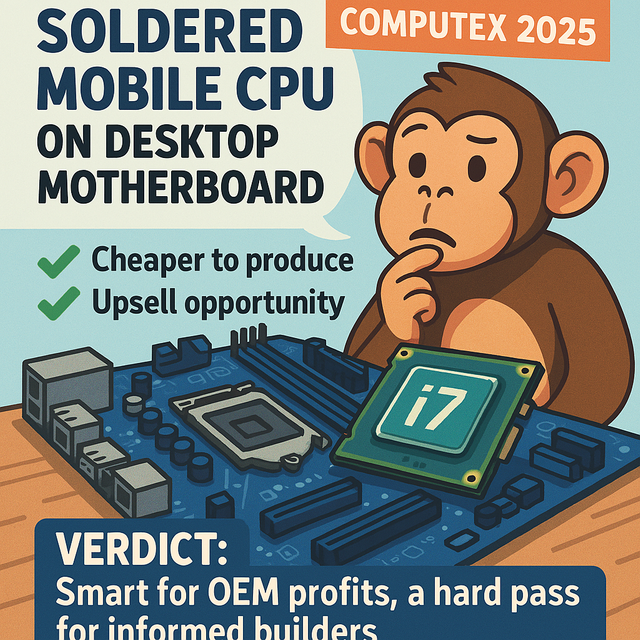Mobile CPUs on Desktop Motherboards: Computex 2025’s Biggest Gimmick?
If you’ve been following Computex 2025, you’ve probably noticed a strange trend: desktop motherboards with soldered mobile CPUs are suddenly everywhere.
Minisforum is already shipping boards with the Ryzen 9-9955HX3D . Framework is taking pre-orders for Ryzen AI Max+ 395 motherboards . ASUS even showcased a pre-built gaming PC with an i7-13620H . And ROG teased desktop boards with Intel Core Ultra 9 275HX .
At first glance, this seems like innovation. But dig deeper, and you’ll realize—we’ve seen this before.
A Niche That Never Took Off
Mobile chipsets repurposed for desktops aren’t new. They’ve been around since the Skylake days (late 2010s). But back then, only obscure Chinese manufacturers dabbled in them—and for good reason.
- They were too expensive. A Chinese motherboard with a soldered i7-13620H was barely €10 cheaper than a standard desktop i5-13400F + motherboard combo.
- Performance was nearly identical. The mobile i7-13620H and desktop i5-13400F have similar specs. Sure, the desktop chip can boost higher with more power, but lock it to 65W, and it behaves exactly like the mobile version.
- The only real difference? The sticker. One says i5, the other i7—and that’s where the marketing magic happens.
Why Are Big Brands Jumping In Now?
Simple: profit margins and consumer psychology.
- Manufacturing costs are similar (or even lower). Soldered CPUs mean fewer socket-related issues.
- Most buyers don’t know (or care) about the difference. Someone grabbing an ASUS pre-built off the shelf isn’t scrutinizing benchmarks—they just see "i7" and assume it’s better.
- It’s an easy upsell. OEMs can charge a premium for what’s essentially a rebranded mobile chip in a desktop form factor.
Will This Trend Last?
Probably not.
- Custom builders won’t bite. Why pay the same (or more) for a locked mobile CPU when you can get a real desktop chip with better upgradeability?
- The performance gap is negligible. Unless you’re chasing extreme efficiency (which most desktop users aren’t), there’s no real advantage.
- It’s still a niche. Just because ASUS and Framework are doing it doesn’t mean it’ll go mainstream.
Final Thoughts
This Computex trend feels more like marketing hype than a real innovation. Sure, soldered mobile CPUs on desktop boards might appeal to pre-built buyers who don’t know better, but for enthusiasts? Stick to standard desktop parts.
What do you think? Smart efficiency play or just a gimmick? Drop your thoughts below!
Like this analysis? Follow me for more deep dives into the latest tech trends—without the fluff.
